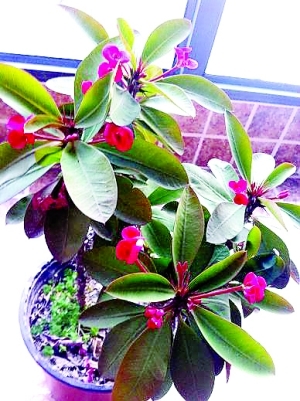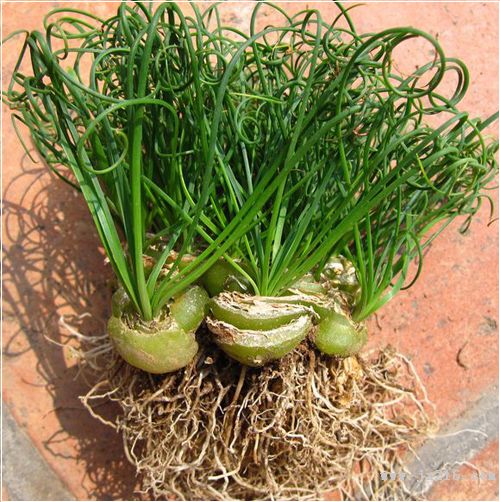Key points of plum blossom cultivation
1. It can be planted in the south and cold-tolerant varieties in the Yellow River basin, but it should be pot-planted indoors in the cold areas of the north. It can be planted after falling leaves to before sprouting in spring. In order to improve the survival rate, root damage should be avoided and transplanting with soil masses should be avoided. The land should be planted in a place that is leeward and sunny. The pot culture soil was evenly mixed with 3 parts of rotten leaf soil, 3 parts of garden soil, 2 parts of river sand and 2 parts of rotten barnyard manure. Water once after planting. Take care of the shade and move it to the normal management in the sun after the growth is restored.
2. Light and temperature prefer warm and sufficient light. In addition to apricot plum varieties can withstand the low temperature of-25 degrees Celsius,-10 degrees Celsius. It is resistant to high temperature and can grow at 40 degrees Celsius. The growth and development is the best in the area with an annual average temperature of 16-23 degrees Celsius. It is very sensitive to temperature and blossoms when the average air temperature reaches-5-7 degrees Celsius in early spring.

3. During the growing period of watering and fertilization, attention should be paid to watering, often keeping the basin soil moist, neither stagnant water, but also too wet and too dry. Water less when the weather is overcast and the temperature is low, otherwise water more. It can be watered twice a day in summer, once a day in spring and autumn, and thoroughly dry in winter. Fertilization is also reasonable, apply basic fertilizer before planting, add a small amount of potassium hydrogen phosphate at the same time, apply potassium hydrogen phosphate again before flowering, and apply mature cake fertilizer for one time to supplement nutrition. Compound fertilizer can also be applied once in June to promote flower bud differentiation. After falling leaves in autumn, apply organic fertilizer once, such as rotten manure and so on.
4. The shaping and pruning time of plum blossom can be carried out within 20 days after blossom. Mainly in the shape of a natural tree, cut off cross branches, erect branches, dry and withered branches, over-dense branches, etc., and cut short lateral branches to promote flowers and leaves to flourish. After the potted plum blossom is put on the pot, it should be re-cut to lay the foundation for the production of bonsai. Plum stakes are usually used as scenes to graft plum blossoms in various postures. At a fixed temperature, plum blossoms can be seen in full bloom during the Spring Festival. If you want to "five -" blossom, you need to keep the temperature 0: 5 degrees Celsius and humid environment. Move outside in early April and keep it in a sunny and well-ventilated place to see the flowers before and after "five -".
5. Flowering period control potted plum blossom-like for family viewing. After falling leaves in winter, the temperature is kept indoors at 0: 5 degrees Celsius. New Year's Day gradually heats it to 5: 10 degrees Celsius and receives full light every day. He often sprays water on the branches, and the moisture should be close to the room temperature.
Key points of cultivation of Jinlumei
Jin Lumei is named because its flower shape is similar to plum, but Jin Lumei is not actually a plum, but it is a Rosaceae plant as well as plum blossom. Jin Lumei is extremely hardy and can endure a low temperature of minus 50 ℃. It is called Gesang flower in the Qinghai-Tibet Plateau of China.
Jin Lumei
Jinlumei is produced in Qinghai, Gansu, Sichuan and Yunnan, distributed in Northeast and North China, and widely distributed in the north temperate zone. Jinlumei is mainly distributed in the mountains above 1800m above sea level, and the original soil is mountain meadow soil. The plant is moderate in shape, beautiful in posture, golden in color, bright and bright, and has high ornamental value in the garden.
When the small seedlings of Jinlumei are installed in the pot or the large plants that have been raised for several years are transferred to the basin, a coarse-grained matrix 2cm thick is first put into the bottom of the basin as a filter layer, which is sprinkled with a fully mature organic fertilizer as a base fertilizer, with a thickness of about 1cm and 2cm, and then covered with a thin layer of matrix, which is about 1cm thick, and then put into the plant to separate the fertilizer from the root system and avoid root burning. You can choose one of the following substrates for potting: vegetable garden soil: slag = 3RV 1; orchard soil: medium coarse river sand: sawdust (dregs) = 4RU 1v 2; or one of paddy soil, pond mud, and rotten leaf soil. Pour water once after putting on the basin and keep it in a shaded environment for a week. When transplanting the seedlings, first dig the planting hole, sprinkle a layer of organic fertilizer at the bottom of the planting hole as the base fertilizer (base fertilizer), the thickness is about 46.6 cm, and then cover a layer of soil and put it into the seedlings to separate the fertilizer from the roots and avoid burning roots. After putting it into the seedling, backfill the soil, cover the root system, and trample the soil with your feet and water it once.
Key points of cultivation of Dryopteris Ceratopteris
Dryopteris Dryopteris is an epiphytic ornamental fern of the genus Polypodiaceae, which is named because its shape is very similar to that of plum antlers. The unique shape of antler fern also makes it a good material for indoor three-dimensional greening. At present, antler fern is widely cultivated in Europe and America. In recent years, the development and utilization of antler fern in China has become more and more mature.
Dryopteris Ceratopteris
1. Containers
The antler fern should be planted in a special pot (that is, several round holes are drilled on the pot wall, each hole is 3cm in diameter). When planting, fill the holes in the pot wall and bottom with fresh palm skin, then add rotten leaf soil, brown peat soil and slightly wet sawdust, and then plant the plant in the basin and put it in a cool place. You can also use a small amount of fern root, moss or rotten leaf soil with rotten cake fertilizer as the substrate to tie the plant to a section of stem with bark and hang it in a wet place. After the plant returns to growth, it is suspended under the ceiling or on the bookshelf where scattered light can be seen. Try to avoid touching the antler fern with your hands, otherwise the white villi on its leaves are easy to fall off.
2. Water
During the peak growing season, water should be watered and sprayed frequently to maintain high air humidity. The peak growth period in summer needs more watering, watering in the morning or evening when the temperature is low, and often spraying water to maintain a high air humidity in the cultivation environment, which is beneficial to the growth and development of vegetative leaves and sporophytes. When it is low in winter, you should water less to prevent rotting roots. Watering time is arranged as far as possible when the temperature is high at noon on a sunny day.
III. Fertilization
During the growing period, diluted cake fertilizer and water can be sprayed every ten days or rapidly available dilute urea can be sprayed on the leaves to keep the leaves green and thick. Every year, rotten leaf soil or moss are added to the potted basket of antler fern to facilitate the growth and development of neosporophyte. Most afraid of random fertilization, concentrated fertilizer and partial application of nitrogen, phosphorus and potassium fertilizer, it is required to follow the principle of "light fertilizer applied frequently, less and more times, and complete nutrition".
4. Temperature
The optimum growth temperature is 18 ℃ ~ 30 ℃, avoid cold frost, keep the overwintering temperature above 10 ℃, enter dormancy when the temperature drops below 4 ℃ in winter, and die of frostbite if the ambient temperature is close to 0 ℃.
5. Lighting
The antler fern is afraid of strong light, so it is necessary to avoid strong light or dry wind. Outdoor maintenance should be placed in the shade or shade, at the same time pay attention to often spray water to the leaves. Outdoor maintenance, can be hung under the shade, to avoid hot sun exposure, so as to avoid leaf yellowing, burning, affecting the ornamental value of antler fern. Move to outdoor semi-shade or shade for a month every one or two months to accumulate nutrients and restore growth.
- Prev

How to keep potted flowers warm in winter?
1. How to manage potted flowers in winter? Potted flowers in the north need to be moved indoors in early winter, and the location after entering the house should take into account the characteristics of all kinds of flowers. Therefore, we should pay attention to the following aspects: (1) the flowers that bloom in winter and spring and the warm flowers: such as crab claw orchid, cyclamen, camellia.
- Next

Planting method of Spring Grass
Ramet can be combined with changing pots in autumn, the method is to break off the small bulbs sprouting around the large bulb and plant them in the culture soil, no matter they have roots or no roots can survive. This method is suitable for mass propagation and is carried out in autumn. After sowing, it is covered with thin soil and covered with glass, so as to keep the soil and air moist, and has a high emergence rate.
Related
- Fuxing push coffee new agricultural production and marketing class: lack of small-scale processing plants
- Jujube rice field leisure farm deep ploughing Yilan for five years to create a space for organic food and play
- Nongyu Farm-A trial of organic papaya for brave women with advanced technology
- Four points for attention in the prevention and control of diseases and insect pests of edible fungi
- How to add nutrient solution to Edible Fungi
- Is there any good way to control edible fungus mites?
- Open Inoculation Technology of Edible Fungi
- Is there any clever way to use fertilizer for edible fungus in winter?
- What agents are used to kill the pathogens of edible fungi in the mushroom shed?
- Rapid drying of Edible Fungi

